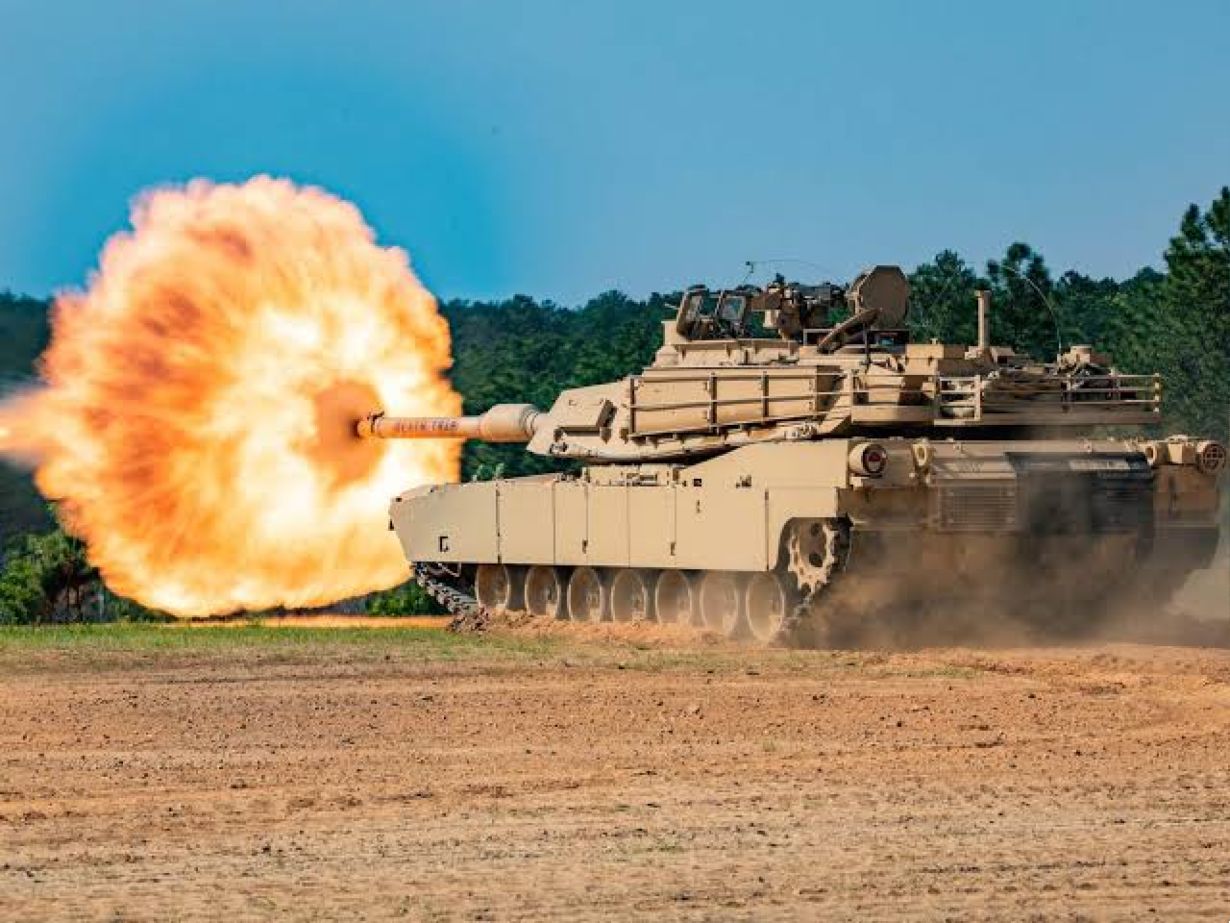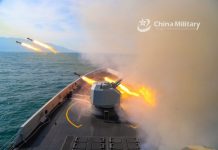In an interesting video that has surfaced online, a pro-Kremlin group has detailed how an Abrams tank that the United States has pledged to Ukraine could be obliterated in combat.
The Pro-Kremlin group that goes by the name ‘Rybar’ published a video on February 26 detailing the vulnerabilities of the Abrams tank, which is otherwise considered a ‘hard to kill’ war machine. The video, incidentally, comes over a month after the US announced it would arm Kyiv with about 31 units of M1A2 Abrams.
The video glorifies the tank’s abilities, emphasizing that the US Abrams is one of the most powerful NATO tanks, regardless of the modifications (or variants). It goes on to say that the “powerful armor, active protection systems, and other survivability modules” of the tank ensure its survival in combat.
Soon, however, the tone shifts, and the video asserts that “Abrams is not an invulnerable machine” and could be disabled like “any other vehicle.”
Building on that sentiment, the video gives details on the most difficult-to-penetrate and the most vulnerable spots of the tank in what soon becomes a guide on how to destroy the powerful vehicle.
According to the Rybar video, the ‘frontal protrusion’ of the Abrams tank is the hardest to defeat. In contrast, it assesses the turret’s roof as the most vulnerable point of attack.
The video instructs that the attackers can damage the mechanic’s optics and the observation and communication systems on the turret’s roof by firing from large-caliber machine guns and grenade launchers.
However, all other places are highly protected by combined armor and will need the most advanced anti-tank weapons to strike.
It adds that if available, the machine guns and grenade launchers can hit the fuel tanks or the locations of the driver and other crew members in the turret.
Another point of vulnerability listed in the video is the sides of the Abrams tank. It says the Abrams are easier to hit from the flanks and emphasizes that all tanks have “tracks,” which usually make them vulnerable and immobile. It warns that even though this won’t eliminate a tank’s combat effectiveness, it will make it easier and, most crucially, immobile.
Video Tutorial- How to Destroy an#ABRAMS Tank?
Rybar- A Pro-Kremlin group released a detailed Video exposing Hit-zones, soft areas & vulnerabilities of M1 ABRAMS #tank. #UkraineRussianWar #Ukraine #NATO #Russia #US pic.twitter.com/gYzjIwXEWf
— EurAsian Times (@THEEURASIATIMES) February 27, 2023
After the front and the sides comes the rear of the tank, which the video calls the “most vulnerable part of the tank.” According to the video, the priority targets must include the engine and ammunition. It says if incendiary mixtures are used, the best solution would be to attack the engine transmission compartment from above.
In addition to listing the spots the attacker should aim for, the video also details the weapons that would be most effective in successfully disabling or destroying an Abrams tank. To that end, it advocates the use of a drone that could attack the engine transmission compartment from above using a drone.
It says that even though the tank is well armored in totality, the optics and communication equipment on top of the tank’s turret could quickly be taken out by hand grenades while the engine and ammunition could be dealt with a shaped-charged weapon.
The video closes by concluding, “The Abrams is justly considered one of the best-protected vehicles, but the experience of the wars near the Persian Gulf has dispelled the myth of its invulnerability. Numerous photos of burning Abrams confirmed once again that any tank could be hit, and the American one is by no means an exception. The main thing is to keep cool and use the necessary means of destruction.”
It is pertinent to note that even though pro-Kremlin groups and troops are already preparing to destroy Abrams, these US war machines may not see the light in combat in the foreseeable future.

US Saber Rattling On Abrams Could Put Ukraine In A Spot
A month after the United States announced pledging Abrams tank to Ukraine, National Security Advisor Jake Sullivan said that the US agreed to send these tanks to Ukraine only because Germany demanded it as a precondition to make a Leopard-2 tank transfer to the embattled country.
Sullivan told ABC News that the Biden Administration had initially decided against sending these tanks to Ukraine as the US military assessed that these tanks would not be helpful on the battlefield.
However, Biden later approved the tank delivery due to mounting pressure from Germany that stressed an “international tank coalition.”
In the interests of “alliance unity” and “to ensure Ukraine gets what it wants,” Biden has agreed to the long-term supply of Abrams tanks — although the Abrams is not what Ukraine needs right now, Sullivan said while responding to a question in the interview about the Abrams tanks may not arrive in Ukraine at all this year.
Jake Sullivan, Biden’s national security advisor being *very clear* about the Abrams – Leopard tank deal and that Biden only decided to send Abrams to get Germany to send Leopards.
(From today’s s ABC interview) pic.twitter.com/4Vk0HkwrIg— Ulrike Franke (@RikeFranke) February 26, 2023
He emphasized that the Leopard tanks are being sent now, and it is an example of Joe Biden rallying the global alliance to give Ukraine what it needs.
However, these comments from the country’s National Security advisor have triggered concerns that the Abrams may not be delivered to Ukraine soon, even though Leopard-2s have already started arriving in Kyiv. Last week, Poland delivered the first batch of tanks to Ukraine.

Before Sullivan’s comments, a US Army official had told the media the Abrams pledged by the US may not arrive in Ukraine even by the end of this year or potentially the next. Secretary of the Army Christine Wormuth said that transporting the tanks to Ukraine may not be a “matter of weeks” amid what seems to be a shortage in stocks in the US inventory.
“We’re looking at the fastest way to get the tanks to the Ukrainians. It’s not going to be a matter of weeks,” Wormuth told reporters last week. She added: “None of the options we’re exploring are weeks or two months. There are longer timelines involved, but there are options that are less than two years, less than a year-and-a-half.”
The dithering by the US on the tank transfer could rattle the administration in Ukraine that lobbied long and hard for western main battle tanks. However, even though no imminent delivery of Abrams is in sight, it is ironic that preparations to destroy these tanks are in full swing in the Kremlin camp.
- Contact the author at sakshi.tiwari9555 (at) gmail.com
- Follow EurAsian Times on Google News




